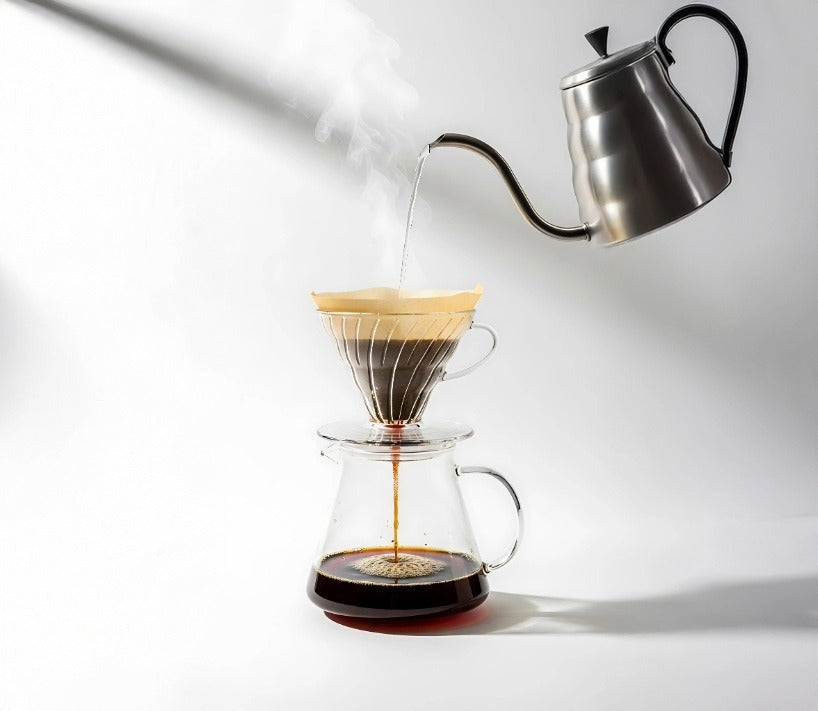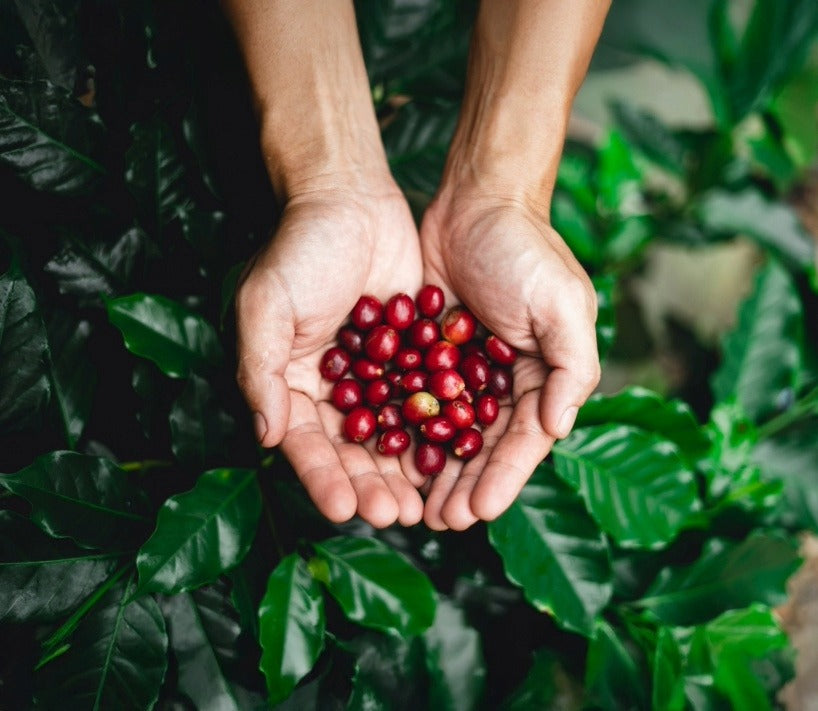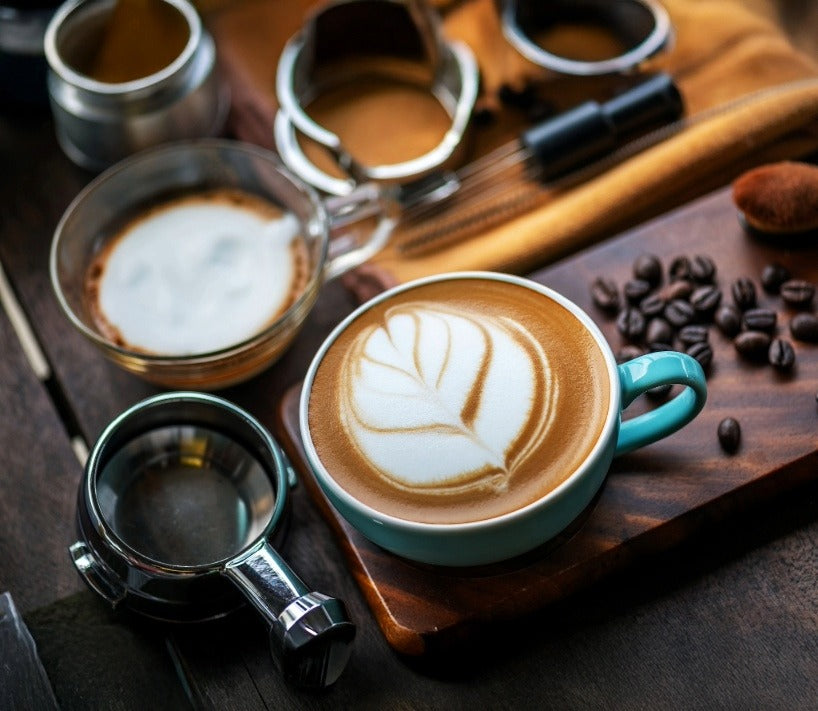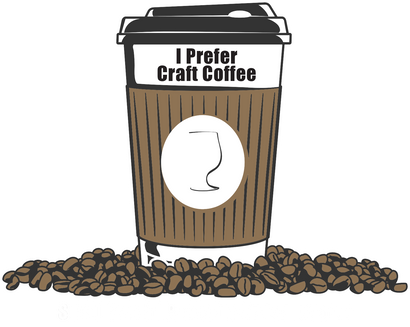Best Rare Specialty Coffee Online—The Tiny Mokka Bean Explained
September 08, 2025 5 min read
Best Rare Specialty Coffee Online — The Tiny Mokka Bean Explained
I’ll say it: my first Mokka roast wasn’t magic. It was… meh. Tiny beans, tiny window. Blink, and you scorch it.
Here’s the promise: if you’ve searched for the Best Rare Specialty Coffee Online and wondered why Mokka costs more, I’ll show you—in simple terms—why it’s rare, why it’s pricey, and how to brew it so it tastes like a tiny chocolate orchestra in your cup. You’ll also learn how to order coffee online the smart way, so you get peak freshness, not “best-by guesswork.”
What is Mokka? (And why do people chase it?)
Mokka is a naturally small-seeded variety with beans that look like little cocoa drops. In the cup, good Mokka leans toward sweet chocolate, vanilla, gentle florals, and a hint of spice. Because the beans are so tiny and dense, the roast curve is tight—there’s less room for error, and precision matters.
Why Mokka is rare (and costs more)
-
Lower yield on the farm: Fewer cherries per tree means less coffee to sell.
-
Selective picking: To get that chocolate-floral cup, farms often pick more carefully—more labor, more time.
-
Processing risk: Mokka’s small seeds dry quickly. That’s good—until it’s too quick. Managing moisture evenly takes skill.
-
Roast precision: Tiny beans heat fast. A solid Mokka roast requires tighter charge temps, airflow, and shorter decision windows. More roast trials = higher cost.
-
Limited availability: You don’t see Mokka everywhere. Scarcity increases price, plain and simple.
Flavor profile you can expect
-
Core notes: chocolate, vanilla, cocoa nib, light florals
-
Mouthfeel: silky to syrupy, depending on roast and brew
-
Aromatics: cocoa, sweet pastry, soft spice
-
Finish: clean, sometimes a lil’ nutty snap
How to choose Mokka wisely
When you’re hunting the Best Rare Specialty Coffee Online, use this simple checklist:
-
Look for a roast date, not just a best-by. Freshness wins.
-
Ask how it’s roasted. Air-roasted or drum—either works, but consistency is king.
-
Check the lot story. Single-origin or micro-lot details are a good sign.
-
Order size smart. Buy what you’ll drink in 2–4 weeks.
-
Grind fresh. Whole bean > pre-ground. If you need grinding, ask for brew method grind.
-
Internal links save you time:
-
Explore current offerings: Shop our coffees
-
Learn exactly how to buy like a pro: Coffee bean buying guide & tips
-
Single-origin vs blends (for Mokka lovers)
-
Single-origin Mokka = clear “chocolate-vanilla-floral” signature.
-
Blend that includes Mokka = rounded sweetness and better consistency across seasons.
Either path can be a win. If you want personal curation, join the Curated Better Morning Coffee at Home Program and I’ll dial it for you.
Roast date vs best-by date (freshness 101)
-
Roast date tells you when the beans were roasted.
-
Best-by tells you almost nothing about flavor peak.
For Mokka, I like days 5–21 post roast for most brew methods. If your bag only shows a best-by date, it’s guesswork. Choose roasters who stamp the roast date clearly. (You’ll see it on ours—peek the listings in Shop our coffees.)
How to order coffee online responsibly (and get the good stuff)
-
Pick a delivery cadence that matches your drinking habits (1–3 bags/month is plenty for most).
-
Use smaller, more frequent orders to keep freshness high.
-
Look for clear shipping windows and fast turnarounds.
-
If you want the best coffee bean delivery without thinking about it, the Curated Better Morning Coffee at Home Program makes it simple.
Expert tip: Grind your beans right before you brew. It’s the fastest flavor upgrade for best craft coffee at home.
Brew gear: simple wins (Fellow Aiden shout-out)
You don’t need a gadget zoo. An automatic pour-over style brewer (like the Fellow Aiden) makes a clean, café-like cup with repeatable temps and flow. It’s basically “easy mode” for Mokka. Manual methods (V60, Kalita) are fantastic too—just keep the recipe tight.
Go-to starting recipe (for pour-over or Aiden-style brew):
-
Dose: 18 g coffee
-
Water: 300 g at ~200°F (93°C)
-
Grind: medium-fine (like table salt)
-
Bloom: 45 g for 30–40 sec
-
Pour: finish in steady pulses by 2:30–2:45
-
Total time: 3:00–3:15
-
Target taste: sweet, chocolatey, light floral; adjust grind to fine if sour, to coarser if bitter.
Roast Levels & Mokka: Flavor and Aroma Comparison
| Roast Level | Flavor Notes (Mokka) | Aroma | Body | Acidity | Best For | Grind Range |
|---|---|---|---|---|---|---|
| Light | Cocoa nib, vanilla, soft florals, gentle spice | Cocoa, floral honey | Light–medium | Bright–lively | Pour-over, Aiden, Aeropress | Medium-fine |
| Medium | Milk chocolate, nougat, vanilla cream | Chocolate pastry, toasted sugar | Medium–silky | Balanced | Drip, Aiden, metal-filter pour-over | Medium |
| Dark | Dark chocolate, roast bitters, low fruit | Cocoa smoke, caramelized sugars | Full | Low–moderate | French press, milk drinks | Medium-coarse |
Tip: If you want the best coffee to buy online for black coffee, start with light to medium Mokka for clarity and sweetness.
Your Simple Plan
-
Pick your lot: Choose single-origin or a custom coffee beans profile that fits your taste. Need help? I’ll match you inside the Curated Better Morning Coffee at Home Program.
-
Choose roast level: Use the table above to match your flavor goals.
-
Set a freshness rhythm: Buy whole bean every 2–4 weeks (that’s where to buy whole bean coffee right: Shop our coffees).
-
Grind right before you brew: Maximum aroma, maximum sweetness.
-
Brew simple: Aiden or pour-over, 18 g to 300 g water, done.
-
Adjust with one knob at a time: If sour → finer grind; if bitter → coarser; if thin → more coffee.
FAQ: Mokka & the Best Rare Specialty Coffee Online
Q1. What makes Mokka part of the “Best Rare Specialty Coffee Online”?
A1. Mokka is a tiny, naturally small-seeded variety with low yields, precise processing needs, and tight roast windows—so it’s scarce, costly, and very flavorful.
Q2. Why is Mokka more expensive to source and roast?
A2. Lower farm yield, careful picking, delicate drying, and high-precision roasting increase labor and risk at every step, which raises the final price.
Q3. Is Mokka good for espresso or just pour-over?
A3. Both. Light-medium Mokka shines in pour-over; medium works well for espresso and milk drinks with chocolate-vanilla sweetness.
Q4. How should I store Mokka to keep it tasting great?
A4. Keep it in a sealed bag with a one-way valve, away from light and heat. Use it within 2–4 weeks of roast for peak flavor.
Q5. What’s better: single-origin Mokka or a blend that uses Mokka?
A5. Single-origin = distinct chocolate-floral signature. Blends = more consistency year-round. Choose based on your flavor goals.
Q6. How often should I order coffee online to keep Mokka fresh?
A6. Buy whole bean every 2–4 weeks in amounts you’ll actually finish. That keeps your cup bright and aromatic.
Want help matching your taste to the right roast level and brew plan? Join the no-guesswork path inside the Curated Better Morning Coffee at Home Program or browse current lots in Shop our coffees. If you’re new, skim the Coffee bean buying guide & tips first.
PS: If you want a no-guesswork coffee delivery experience at home, grab my free “Deliver Morning Magic” guide right here:
https://iprefercraftcoffee.com/blogs/news/best-coffee-bean-delivery-2025-fresh-roasted-fast-shipping
Also in Best Coffee To Buy Online Education

Biggest Mistake With Pourover Coffee: It's Your Beans
January 02, 2026 3 min read
Learn how to brew the best pourover coffee at home with the best tasting craft coffee online. Remember, the best coffee to drink at home starts with the freshest craft coffee online, not the bargain bin beans at your local supermarket.

Specialty Roast Coffee Beans Online: What’s the Deal, Really?
January 01, 2026 4 min read
You'll learn what specialty roast coffee beans online actually means, and why it translates to the best tasting craft coffee at home.

High-Score Coffee Beans Online: Why 85+ Points Actually Matter
December 31, 2025 3 min read
Learn why the best tasting craft coffee online is high-scoring specialty coffee that tastes better and how to choose the right beans online. Order coffee online from a roaster you trust.
